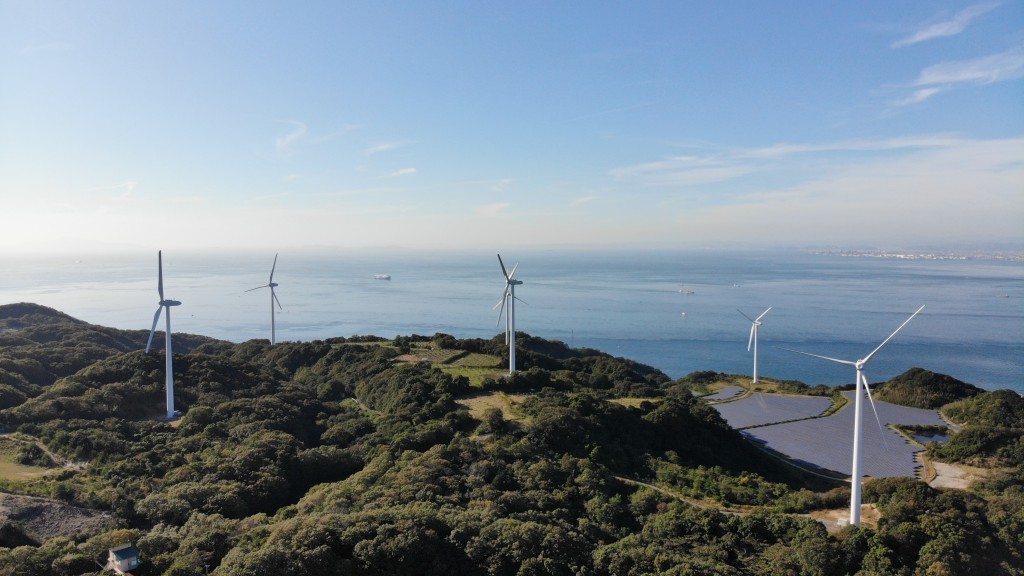
Climate change has become one of the most critical global challenges of our time. In accordance with the Paris Agreement, a legally binding international treaty on climate change, the Japanese government pledged to cut greenhouse gas (GHG) emissions by 46 percent by 2030 and achieve carbon neutrality by 2050.
The government emphasizes that this is an “ambitious target,” but what is the present status of GHG emissions in Japan, what is the government’s strategy to meet the target, and what could be the economic impact of the policy?
It is true that GHG emissions in Japan have been trending down since 2013, at an average of 3.3 percent per annum in total GHG emissions. However, achieving the target remains challenging.
To meet the targeted emissions numbers, the authorities recently launched several policy initiatives and instruments. One example is the updated Green Growth Strategy compiled by the Ministry of Economy, Trade and Industry, which details 14 priority areas to develop and explore ways to reduce GHG emissions in industries such as renewable energy and car.
In addition, the Strategic Energy Plan was revised in October 2021, indicating an energy mix target from 2030. According to this plan, renewable energy, excluding hydropower, will account for 27 percent of the total energy mix, while the share of nuclear power, which has been declining since the Fukushima nuclear disaster in 2011, will rebound to 20-22 percent. In total, fossil fuel-based energy will decrease to 41 percent by 2030 from 76 percent in 2020.
On policy instruments, the government plans to introduce an emissions trading system (ETS) and a surcharge on large enterprises on top of the Global Warming Countermeasure Tax on fossil fuels. A new ETS system, called the GX league, will become operational in April 2023. The authorities also approved a new surcharge on industries that emit a significant amount of GHG, while the details, such as a surcharge fee level and date for introduction, are still under discussion.
Possible transition risks
While the policy efforts to address climate change challenges are welcome, will they also pose risks to the Japanese economy?
According to the Task Force for Climate-Related Financial Disclosures, risks related to climate change can be divided into physical and transition risks. Although this classification was intended for financial disclosures, the framework can be extended to an analysis of the macroeconomy.
Physical risks are easy to envisage since they are the result of climatic events such as storms and floods, which strike Japan frequently. On the other hand, transition risks are (negative) ripple effects from policy actions to transform the economy from fossil to non-fossil fuels. Then, what kind of transition risks should we be concerned in the Japanese context? There are three possible risks.
Firstly, phasing out coal-fired plants could increase electricity charges, burdening industries and households. The latest energy mix plan aims for a complete phase-out from coal-fired power plants by 2050. In this regard, coal-fired energy needs to be shifted to other renewable energy sources. The cost of renewable energy is still higher than coal-fired energy in Japan, implying that this energy mix shift could raise electricity charges during the transition period.
Another plan to reduce coal-fired energy is to utilize co-firing coal generation with ammonia, substituting coal with renewable energy at a specific ratio with due consideration for fuel quality. However, the method requires advanced technology in terms of transportation and storage, possibly driving up the production cost.
Secondly, the worldwide trend of shifting to electric vehicles (EV) has significant implications for the Japanese economy because the car industry has been one of the key drivers of economic growth in Japan for decades. The Japanese government aims to make the transition from fossil-fuel-based cars to EVs by 2035. In contrast, Japanese car companies have been slow to expand their EV share as they have enjoyed a competitive advantage in hybrid-car sales. If this trend continues, foreign EVs will gain a stronger foothold in the Japanese market, eroding the domestic manufacturing sector and potentially the country’s economic growth.
Thirdly, carbon pricing, such as the new surcharge, could raise the households’ cost of living through higher energy prices. The negative impact of carbon pricing on low-income households could be substantial since they have no choice but to spend a large sum of their meager income on energy consumption. Although the new surcharge level will be relatively low when introduced, the impact should be monitored when the surcharge rate is raised.
The authorities should take these transition risks into account with a view to mitigating the negative impacts of their climate policy on the economy. With its visibility, the physical risks of climate change are easy to monitor. In contrast, the transition risks involved in climate change policy are hard to identify and track and they will also affect the nation’s macroeconomic conditions via several channels. Careful monitoring and assessment of transition risks are required to avoid negative impacts on the economy.
